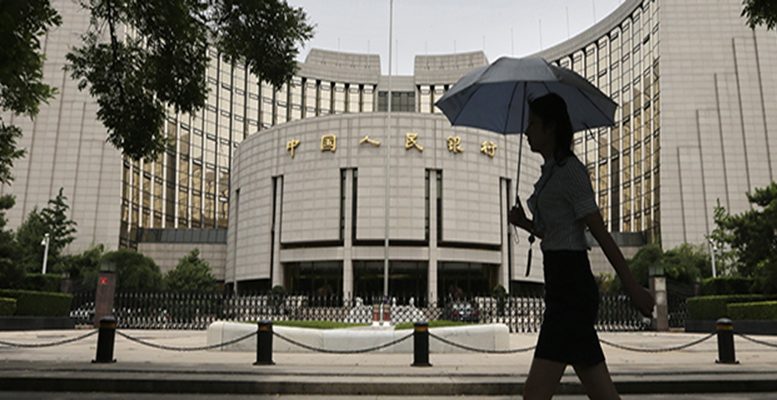Alicia García Herrero (Natixis) | Chinese economy has rebounded by 8.1% in 2021 after slumping to 2.2% in 2020. While the Q4 year-on-year growth rate was lowered to only 4%, the current growth momentum was still positive as the QoQ growth rate (seasonally adjusted) have accelerated to 1.6% in Q4 from 0.7% in Q3. However, there are signs that the Chinese economy is facing increasing challenges, raising questions on whether China can sustain its growth in the lead up to 2022.
One of those key challenges comes from the slower recovery of household consumption. Chinese government’s strict measures to contain the spread of the Covid-19 are affecting consumption, which is not yet back to pre-pandemic growth rate. Even though the households’ propensity to consume rebounded to 77%, the household’s expenditure per capita went down to 8.6% in Q4 from 11.5% in Q3 due to the slower growth in household income. The contribution of consumption to GDP growth was also reduced to 3.4% in Q4 from 3.9% in Q3. In the same vein, retail sales in December also decelerated further to 1.7% YoY in December from 3.9% YoY in November. Moving into 2022, we expect consumption, especially in the service sector, to be still under pressure with the tight anti-Covid restrictions.
Beyond consumption sluggishness, a traditionally more important contributor to China’s economic growth, namely fixed asset investment (FAI), grew negatively in the fourth quarter (-0.5%) in Q4 2021. Real estate developers reduced investment, which echoed the sluggish growth in housing unit sales and prices. In fact, the real estate sector’s value-added decelerated by -5.6% YoY in Q4 2021 compared to 7.5% YoY in Q4 2019. Consequently, the property investment continued to decline year-on-year over the last quarter of 2021.
In addition to the fading real estate sector, the government’s tighter regulations also affected some other service sectors. For example, the information and software sector also saw its value-added growth rate decelerated to 9.7% YoY in Q4 2021 from 13.4% in Q4 2019, as the government tightened regulations on data collection and management. However, the financial sector grew more solidly, with its value-added growing 8.9% in Q4 2021 compared to 8.1% YoY in Q4 2019.
On the positive side, the manufacturing sector also showed resilience with its value-added growth increasing to 13.9% YoY in Q4 2021 compared to only 2.7% in Q4 2019. In December 2021, the manufacturing fixed asset investment grew by more than 10% YoY. The success of the latter was partly due to surging exports, which reached more than 20% year-on-year growth rates in USD terms in November and December respectively amid supply chain disruptions. At the same time, Chinese imports decelerated from 31.7% to 19.5% over the past two months, which implies a further increase in China’s trade surplus from 71.7 in November to 94.4 billion USD in December.
The government’s limited support for most of 2021 was part of the reasons why China’s economic growth slowed in the second half. The caution may reflect the policy maker’s satisfaction with the achieved growth rate. After all, the average two-year annualized GDP growth rate (for 2020 and 2021 as a whole) during the Covid-19 time was higher than 5%. In 2022, though, given the decelerating growth trend at play, Chinese policy makers have made it clear that more stimulus is needed as shown by the recent measures of the People’s Bank of China (PBoC). After cutting the reserve requirement ratio and the one-year loan prime rate (LPR) on December 2021, China cut the one-year Medium-term Loan facility (MLF) and the 7-day reverse repo rates by 10 bp respectively on 17th January, which may be further followed by a reduction in the 5-year LPR. The latter one, if enforced, will be a key signal to stabilize the real estate sector. On the fiscal side, the issuance of local government special purpose bonds have accelerated to support fixed asset investment, especially in infrastructure. However, the impact of the increased local government special bond issuance seems so far limited as local governments became increasingly hesitant to invest with such proceeds.
On the foreign exchange market, the economic recovery in China supported the rally of the RMB during 2021, which appreciated from 6.5 to 6.4 against the US dollar. Even if the PBoC implemented much laxer monetary policies against the backdrop of a more hawkish Fed recently, the RMB remained resilient. Still, the PBoC has explicitly expressed concerns about “one-way movement” of the RMB, signaling that it might not want a too fast appreciation of the currency amid economic slowdown.
Our expectation is that both monetary and fiscal expansionary policies will continue accelerating in Q1 2022 to revert the current slowdown trend. In fact, the recent official manufacturing and non-manufacturing PMI have already increased to 50.3 and 52.7 respectively, signing some stabilization of China’s economic growth. All in all, we forecast the Chinese economy to grow at 5.2% in 2022 thanks to such stimulus measures.





